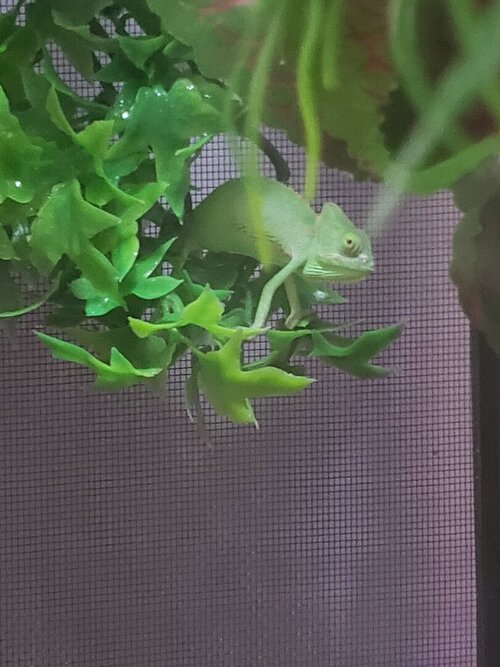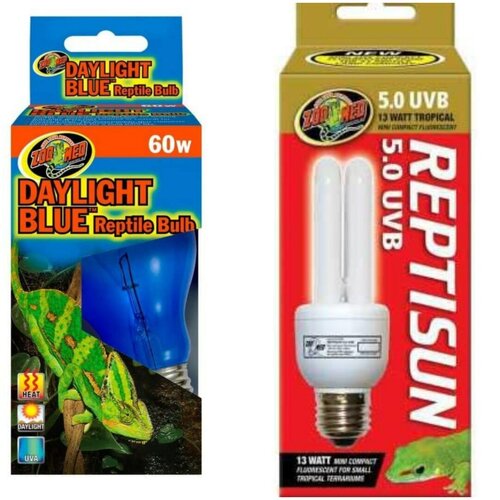PrincessSpaz
Established Member
My daughter has a baby veiled chameleon that she got a week ago from PetSmart (so no idea on age) ... PetSmart said Spaz was a male but no spurs so I'm assuming he is actually a she.
Her name is Spaz because she is typically bouncing around her house nonstop until it's bedtime (when her night light gets turned on) then she goes to sleep and stays asleep until her day lights come on (dual bulb fixture with zoo med UV A and B/heat) ... for some reason Spaz thinks when her door opens, it's time to climb out to play with her favorite human so she's normally very social. Until today.
Yesterday we replaced her bulbs and she went to sleep much earlier than usual. Today she's been hanging out mid cage, hiding, didn't eat anything offered (crickets and waxworms, nothing appealed to her) and hasn't wanted to play
Until I can locate a more suitable sandbox, she has a cup large enough that she can tunnel in (thought maybe she needed to lay eggs?) But she hasn't seemed interested in it
She's currently in a zoo med mesh cage (16x16x30, she's no bigger than my thumb right now) ... she has stayed mid to lower portion of her house since about 9:00 (it's currently nearly 16:00) this morning
She doesn't appear dehydrated (2 cool mist humidifiers run 24/7 creating dew droplets all day and the top leaves are misted 3-4 minutes at a time 5-6x a day) she does seem very irritated and lethargic (compared to what has been normal for her the past 7 days)
Could she be sick, starting to shed or trying to lay eggs? It's a Sunday so no vets are open here and the vets who do see chameleons are 1.5-2 hour drive away
Her name is Spaz because she is typically bouncing around her house nonstop until it's bedtime (when her night light gets turned on) then she goes to sleep and stays asleep until her day lights come on (dual bulb fixture with zoo med UV A and B/heat) ... for some reason Spaz thinks when her door opens, it's time to climb out to play with her favorite human so she's normally very social. Until today.
Yesterday we replaced her bulbs and she went to sleep much earlier than usual. Today she's been hanging out mid cage, hiding, didn't eat anything offered (crickets and waxworms, nothing appealed to her) and hasn't wanted to play
Until I can locate a more suitable sandbox, she has a cup large enough that she can tunnel in (thought maybe she needed to lay eggs?) But she hasn't seemed interested in it
She's currently in a zoo med mesh cage (16x16x30, she's no bigger than my thumb right now) ... she has stayed mid to lower portion of her house since about 9:00 (it's currently nearly 16:00) this morning
She doesn't appear dehydrated (2 cool mist humidifiers run 24/7 creating dew droplets all day and the top leaves are misted 3-4 minutes at a time 5-6x a day) she does seem very irritated and lethargic (compared to what has been normal for her the past 7 days)
Could she be sick, starting to shed or trying to lay eggs? It's a Sunday so no vets are open here and the vets who do see chameleons are 1.5-2 hour drive away







